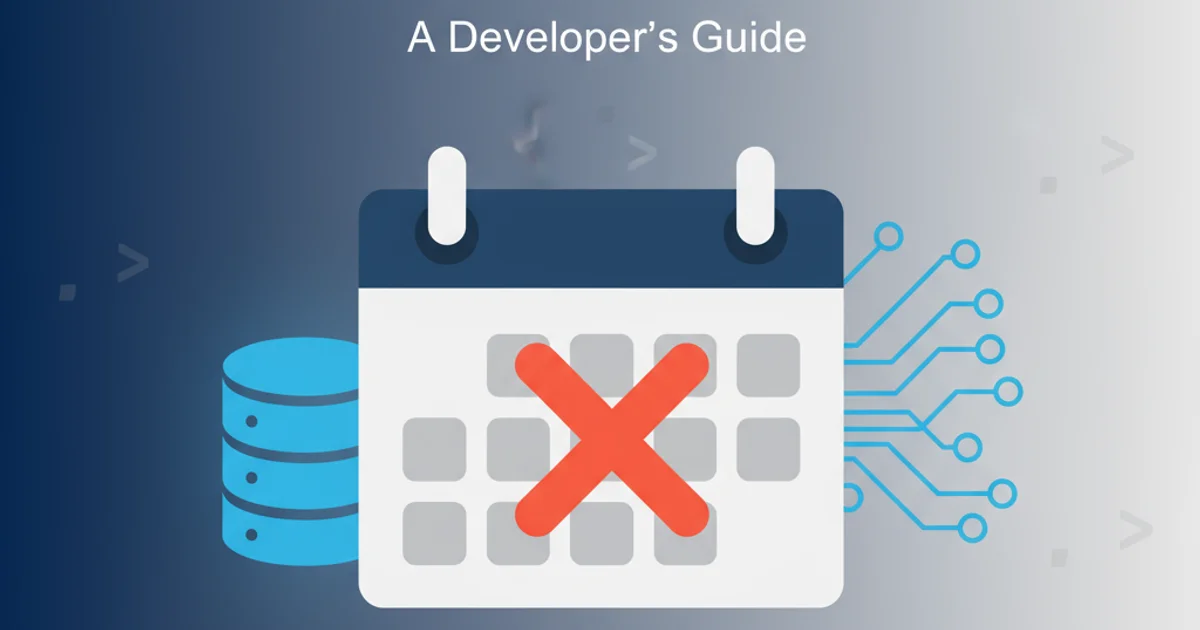Larger than and less than in C switch statement
Categories:
Handling Range Comparisons in C Switch Statements

Explore techniques for implementing 'greater than' and 'less than' logic within C switch statements, overcoming their inherent limitations for range-based conditions.
The C switch statement is a powerful construct for selecting one of many code blocks to execute based on the value of a single expression. However, its direct application is limited to exact matches against constant integer or character values. This often leads developers to wonder how to implement range-based comparisons, such as 'greater than' or 'less than', which are common requirements in real-world programming. This article will delve into various strategies to achieve range-based logic within or around the switch statement, providing practical examples and best practices.
Understanding the Limitations of switch
At its core, the C switch statement evaluates an integer expression and compares its value against a series of case labels. Each case label must be a constant integer expression. This design means that case labels like case > 10: or case < 5: are syntactically invalid. The switch statement is designed for discrete, exact value matching, not for evaluating conditions or ranges directly.
flowchart TD
A[Input Value] --> B{Is Value Exact Match?}
B -- Yes --> C[Execute Case Block]
B -- No --> D{Is Value in Range?}
D -- No --> E[Execute Default/Next Logic]
D -- Yes --> F[Cannot use 'switch' directly for ranges]Flowchart illustrating the direct limitation of switch for range comparisons
Strategies for Range-Based Logic with switch
While switch cannot directly handle range comparisons, several techniques can be employed to work around this limitation. These methods typically involve transforming the range condition into a discrete value that the switch statement can then evaluate.
1. Using if-else if Ladder (The Direct Approach)
The most straightforward and often recommended way to handle range comparisons is to use an if-else if ladder. This construct is explicitly designed for evaluating a series of conditions sequentially. While not a switch statement, it's the natural alternative when switch limitations are encountered.
int score = 85;
if (score >= 90) {
printf("Grade: A\n");
} else if (score >= 80) {
printf("Grade: B\n");
} else if (score >= 70) {
printf("Grade: C\n");
} else if (score >= 60) {
printf("Grade: D\n");
} else {
printf("Grade: F\n");
}
Example of using an if-else if ladder for grading based on score ranges.
2. Mapping Ranges to Discrete Values
This technique involves pre-processing the input value to map it to a discrete integer that can then be used in a switch statement. This is particularly useful when the ranges are fixed and well-defined, and you still prefer the structure of a switch.
int temperature = 25;
int temp_category;
if (temperature < 0) {
temp_category = 0; // Freezing
} else if (temperature >= 0 && temperature < 10) {
temp_category = 1; // Cold
} else if (temperature >= 10 && temperature < 20) {
temp_category = 2; // Cool
} else if (temperature >= 20 && temperature < 30) {
temp_category = 3; // Warm
} else {
temp_category = 4; // Hot
}
switch (temp_category) {
case 0:
printf("It's freezing!\n");
break;
case 1:
printf("It's cold.\n");
break;
case 2:
printf("It's cool.\n");
break;
case 3:
printf("It's warm.\n");
break;
case 4:
printf("It's hot!\n");
break;
default:
printf("Unknown temperature category.\n");
break;
}
Mapping temperature ranges to discrete categories for a switch statement.
3. Using Integer Division for Range Grouping
For numerical ranges that are evenly spaced, integer division can be a very elegant way to map a continuous range to discrete case values. This works best when your ranges are multiples of a certain number.
int value = 37;
// Example: Grouping values into tens (0-9, 10-19, 20-29, etc.)
switch (value / 10) {
case 0: // 0-9
printf("Value is between 0 and 9.\n");
break;
case 1: // 10-19
printf("Value is between 10 and 19.\n");
break;
case 2: // 20-29
printf("Value is between 20 and 29.\n");
break;
case 3: // 30-39
printf("Value is between 30 and 39.\n");
break;
default:
printf("Value is 40 or greater.\n");
break;
}
Using integer division to group values into ranges for a switch statement.
4. Fall-through with case Labels (Advanced/Specific Use)
While not directly for 'greater than' or 'less than', the fall-through behavior of switch can sometimes be leveraged for specific range-like scenarios, especially when dealing with flags or bitmasks, or when you want to group several discrete values. This is less about ranges and more about multiple exact matches leading to the same action.
int day = 6; // 1=Mon, ..., 7=Sun
switch (day) {
case 1:
case 2:
case 3:
case 4:
case 5:
printf("It's a weekday.\n");
break;
case 6:
case 7:
printf("It's the weekend!\n");
break;
default:
printf("Invalid day.\n");
break;
}
Using fall-through for multiple discrete cases that share the same action.
In conclusion, while the C switch statement is not designed for direct 'greater than' or 'less than' comparisons, there are effective strategies to achieve similar logic. The if-else if ladder remains the most idiomatic and readable solution for complex range conditions. For simpler, fixed ranges, mapping to discrete values or using integer division can provide a switch-like structure. Always choose the method that best balances clarity, performance, and maintainability for your specific use case.